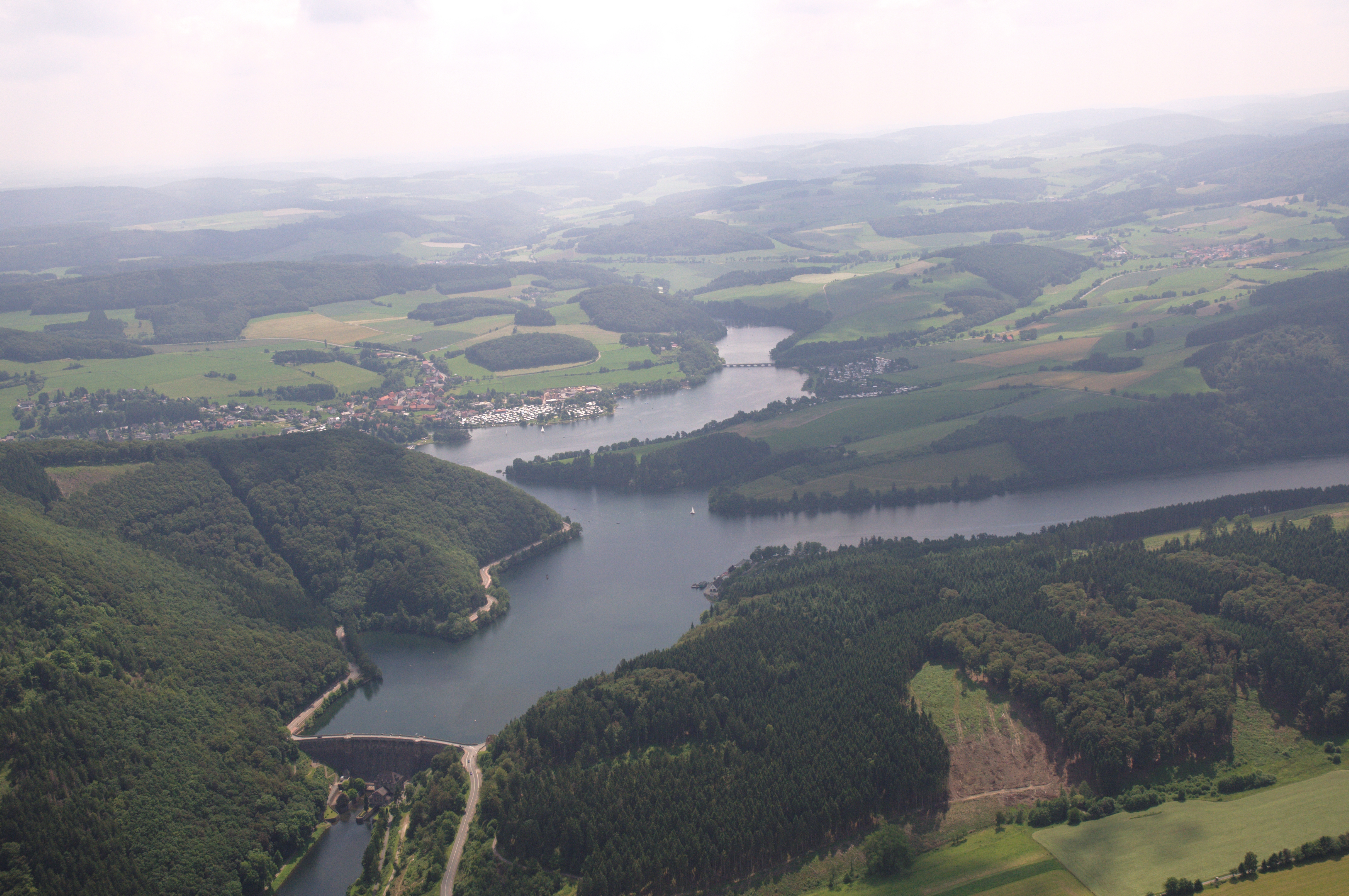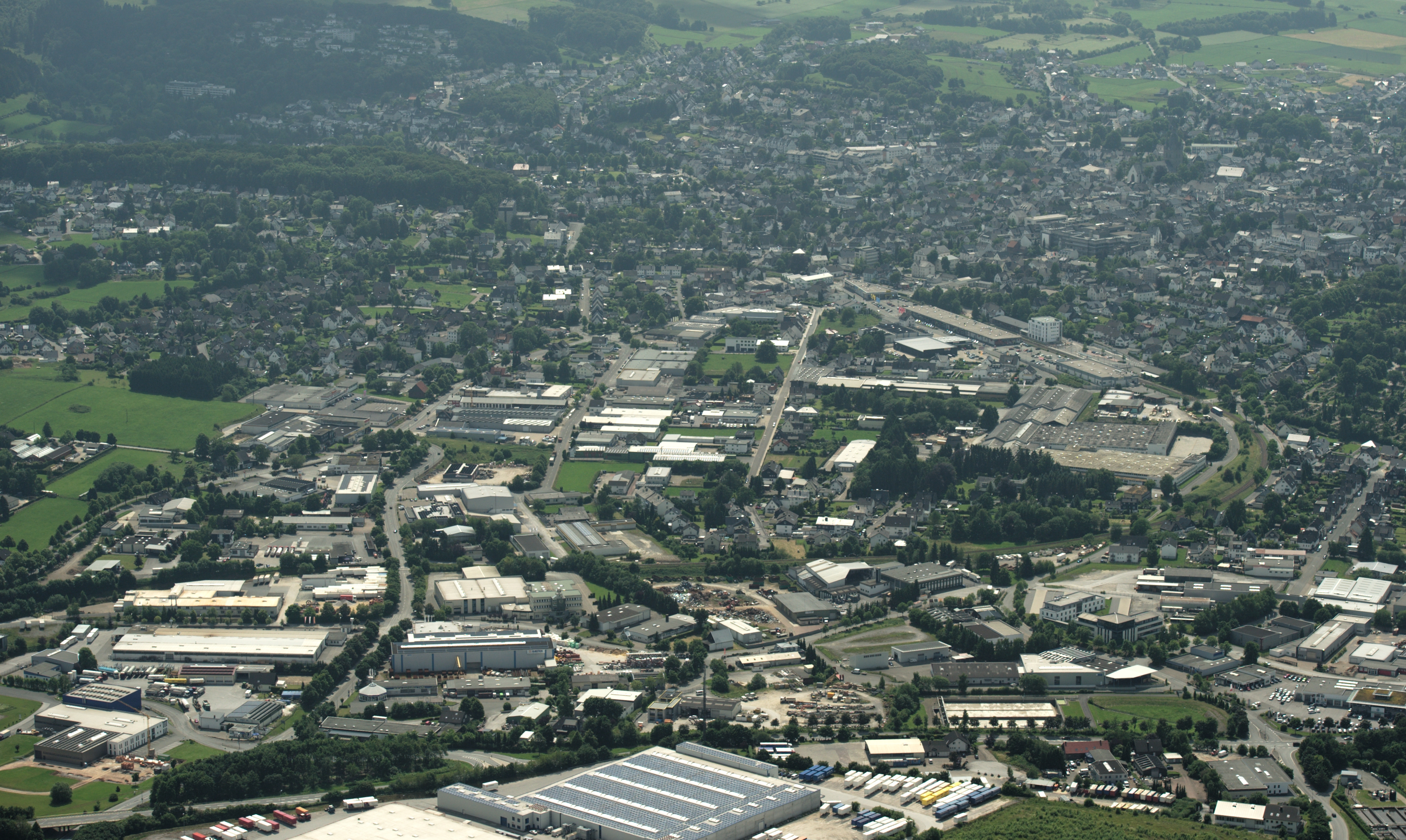|
Diemelsee (municipality)
Diemelsee is a municipality in Waldeck-Frankenberg in northwest Hesse, Germany, and is part of the low mountain region called Upland (region), Upland. Adorf (Diemelsee), Adorf is the seat of this municipality. Geography Location Diemelsee lies on the river Diemel in the Diemelsee Nature Park just upstream from and southwest of the Diemelsee reservoir (water), reservoir. The town of Korbach is found about 10 km to the southeast, and the town of Paderborn 39 km to the north. Neighbouring communities Diemelsee borders in the north on the town of Marsberg (Hochsauerlandkreis in North Rhine-Westphalia), in the northeast on the town of Bad Arolsen, in the east on the community of Twistetal, in the south on the town of Korbach, in the southwest on the community of Willingen (all in Waldeck-Frankenberg), and in the west on the town of Brilon (Hochsauerlandkreis). Constituent communities The community of Diemelsee came into being as part of municipal reform in 1971 through the v ... [...More Info...] [...Related Items...] OR: [Wikipedia] [Google] [Baidu] |
Ortsteil
A village is a clustered human settlement or Residential community, community, larger than a hamlet (place), hamlet but smaller than a town (although the word is often used to describe both hamlets and smaller towns), with a population typically ranging from a few hundred to a few thousand. Though villages are often located in rural areas, the term urban village is also applied to certain urban neighborhoods. Villages are normally permanent, with fixed dwellings; however, transient villages can occur. Further, the dwellings of a village are fairly close to one another, not scattered broadly over the landscape, as a dispersed settlement. In the past, villages were a usual form of community for societies that practice subsistence agriculture, and also for some non-agricultural societies. In Great Britain, a hamlet earned the right to be called a village when it built a Church (building), church. [...More Info...] [...Related Items...] OR: [Wikipedia] [Google] [Baidu] |
Twistetal
Twistetal is a municipality in Waldeck-Frankenberg in northwest Hesse, Germany, southwest of Bad Arolsen. Geography Location The community lies on the river Twiste, a tributary to the Diemel, itself a tributary to the Weser. Twistetal is only a short way downstream from, and southwest of, the Twistesee, a man-made lake. It is located about 6 kilometers southwest from Bad Arolsen. Neighbouring communities Twistetal borders in the north and east on the town of Bad Arolsen, in the southeast on the town of Waldeck, in the southwest on the town of Korbach and in the west on the community of Diemelsee (all in Waldeck-Frankenberg). Constituent communities Twistetal consists of the following centres: *Berndorf *Elleringhausen *Gembeck *Mühlhausen *Nieder-Waroldern *Ober-Waroldern *Twiste (main town and administrative seat) Politics The community's mayor is Stefan Dittmann ( FDP), elected in 2018. Twistetal's council is made up of 23 councillors, with seats apportioned thus, in accorda ... [...More Info...] [...Related Items...] OR: [Wikipedia] [Google] [Baidu] |
Visitors' Mine
A mine, i.e. an industrial facility for the underground extraction of mineral commodities, has three operating phases: it may be open or running, or closed or it may be a working museum. Most mines are simply closed once they are no longer productive. For safety they are usually partially destroyed (filled in). However, many mines are at least partially accessible today to visitors. In such cases they may be referred to as show mines or visitor mines if the focus is mainly on visiting the former mine, or mining museums if the mine only forms part of a museum. Most show mines have been set up in abandoned mines. In recent decades, however, they are often established immediately after mining ceases, creating some jobs funded at least partially by cultural tourism. Overview A show mine is often just a small part of a much larger mining facility that is developed, secured and provided with educational exhibits and installations. Such mines are usually equipped with fixed electrical l ... [...More Info...] [...Related Items...] OR: [Wikipedia] [Google] [Baidu] |
English Language
English is a West Germanic language of the Indo-European language family, with its earliest forms spoken by the inhabitants of early medieval England. It is named after the Angles, one of the ancient Germanic peoples that migrated to the island of Great Britain. Existing on a dialect continuum with Scots, and then closest related to the Low Saxon and Frisian languages, English is genealogically West Germanic. However, its vocabulary is also distinctively influenced by dialects of France (about 29% of Modern English words) and Latin (also about 29%), plus some grammar and a small amount of core vocabulary influenced by Old Norse (a North Germanic language). Speakers of English are called Anglophones. The earliest forms of English, collectively known as Old English, evolved from a group of West Germanic (Ingvaeonic) dialects brought to Great Britain by Anglo-Saxon settlers in the 5th century and further mutated by Norse-speaking Viking settlers starting in the 8th and 9th ... [...More Info...] [...Related Items...] OR: [Wikipedia] [Google] [Baidu] |
German Language
German ( ) is a West Germanic languages, West Germanic language mainly spoken in Central Europe. It is the most widely spoken and Official language, official or co-official language in Germany, Austria, Switzerland, Liechtenstein, and the Italy, Italian province of South Tyrol. It is also a co-official language of Luxembourg and German-speaking Community of Belgium, Belgium, as well as a national language in Namibia. Outside Germany, it is also spoken by German communities in France (Bas-Rhin), Czech Republic (North Bohemia), Poland (Upper Silesia), Slovakia (Bratislava Region), and Hungary (Sopron). German is most similar to other languages within the West Germanic language branch, including Afrikaans, Dutch language, Dutch, English language, English, the Frisian languages, Low German, Luxembourgish, Scots language, Scots, and Yiddish. It also contains close similarities in vocabulary to some languages in the North Germanic languages, North Germanic group, such as Danish lan ... [...More Info...] [...Related Items...] OR: [Wikipedia] [Google] [Baidu] |
Diemelsee Sauerland Ost 400 Pk
The Diemelsee or Diemel Reservoir (german: Diemelstausee) is a reservoir with a surface area of 1.65 km² and about capacity of 19.9 million m³ on the River Diemel in the counties of Waldeck-Frankenberg in North Hesse, and Hochsauerlandkreis, Westphalia, Germany. It is part of the Diemeltalsperre hydropower system (DiT) comprising the Diemel Dam, the equalizing basin, the power plant and the reservoir itself, owned by the Federal Waterway and Navigation Authority and managed by its Hann. Münden office. The Diemel Reservoir, along with the Edersee is part of the water regulation structure in the catchment area of the River Weser. Location The Diemelsee is located a few kilometres northeast of the Upland in the northeastern foothills of the Rothaar Mountains that lie in the northeast of the Rhenish Massif. It lies mainly within the county of Waldeck-Frankenberg, its smaller northern section and its dam belong to the county of Hochsauerlandkreis. In is also wi ... [...More Info...] [...Related Items...] OR: [Wikipedia] [Google] [Baidu] |
Coat Of Arms
A coat of arms is a heraldry, heraldic communication design, visual design on an escutcheon (heraldry), escutcheon (i.e., shield), surcoat, or tabard (the latter two being outer garments). The coat of arms on an escutcheon forms the central element of the full achievement (heraldry), heraldic achievement, which in its whole consists of a shield, supporters, a crest (heraldry), crest, and a motto. A coat of arms is traditionally unique to an individual person, family, state, organization, school or corporation. The term itself of 'coat of arms' describing in modern times just the heraldic design, originates from the description of the entire medieval chainmail 'surcoat' garment used in combat or preparation for the latter. Roll of arms, Rolls of arms are collections of many coats of arms, and since the early Modern Age centuries, they have been a source of information for public showing and tracing the membership of a nobility, noble family, and therefore its genealogy across tim ... [...More Info...] [...Related Items...] OR: [Wikipedia] [Google] [Baidu] |
Free Democratic Party (Germany)
The Free Democratic Party (german: link=no, Freie Demokratische Partei; FDP, ) is a liberal political party in Germany. The FDP was founded in 1948 by members of former liberal political parties which existed in Germany before World War II, namely the German Democratic Party and the German People's Party. For most of the second half of the 20th century, the FDP held the balance of power in the Bundestag. It has been a junior coalition partner to both the CDU/CSU (1949–1956, 1961–1966, 1982–1998 and 2009–2013) and Social Democratic Party of Germany (1969–1982, 2021–presenter). In the 2013 federal election, the FDP failed to win any directly elected seats in the Bundestag and came up short of the 5 percent threshold to qualify for list representation, being left without representation in the Bundestag for the first time in its history. In the 2017 federal election, the FDP regained its representation in the Bundestag, receiving 10.6% of the vote. After the 2021 fe ... [...More Info...] [...Related Items...] OR: [Wikipedia] [Google] [Baidu] |
Social Democratic Party Of Germany
The Social Democratic Party of Germany (german: Sozialdemokratische Partei Deutschlands, ; SPD, ) is a centre-left social democratic political party in Germany. It is one of the major parties of contemporary Germany. Saskia Esken has been the party's leader since the 2019 leadership election together with Lars Klingbeil, who joined her in December 2021. After Olaf Scholz was elected chancellor in 2021 the SPD became the leading party of the federal government, which the SPD formed with the Greens and the Free Democratic Party, after the 2021 federal election. The SPD is a member of 11 of the 16 German state governments and is a leading partner in seven of them. The SPD was established in 1863. It was one of the earliest Marxist-influenced parties in the world. From the 1890s through the early 20th century, the SPD was Europe's largest Marxist party, and the most popular political party in Germany. During the First World War, the party split between a pro-war mainstream ... [...More Info...] [...Related Items...] OR: [Wikipedia] [Google] [Baidu] |
Christian Democratic Union (Germany)
The Christian Democratic Union of Germany (german: link=no, Christlich Demokratische Union Deutschlands ; CDU ) is a Christian democratic and liberal conservative political party in Germany. It is the major catch-all party of the centre-right in German politics. Friedrich Merz has been federal chairman of the CDU since 31 January 2022. The CDU is the second largest party in the Bundestag, the German federal legislature, with 152 out of 736 seats, having won 18.9% of votes in the 2021 federal election. It forms the CDU/CSU Bundestag faction, also known as the Union, with its Bavarian counterpart, the Christian Social Union in Bavaria (CSU). The group's parliamentary leader is also Friedrich Merz. Founded in 1945 as an interdenominational Christian party, the CDU effectively succeeded the pre-war Catholic Centre Party, with many former members joining the party, including its first leader Konrad Adenauer. The party also included politicians of other backgrounds, including lib ... [...More Info...] [...Related Items...] OR: [Wikipedia] [Google] [Baidu] |
Brilon
Brilon (; Westphalian: ''Brailen'') is a town in North Rhine-Westphalia, central Germany, that belongs to the Hochsauerlandkreis. Geography Brilon is situated on the Brilon Heights at an altitude of about 450 m on the upper reaches of the river Möhne. The town lies between the Arnsberg Forest nature reserve to the west and the Lake Diemel nature reserve and the Hoppecke to the south-east. Neighboring municipalities Division of the town After the local government reforms of 1975 Brilon consists of 17 districts: * Alme (1.273 inhabitants) * Altenbüren (1.453 inhabitants) * Bontkirchen (553 inhabitants) * Brilon Town (14.513 inhabitants) * Brilon-Wald (595 inhabitants) * Esshoff (80 inhabitants) * Gudenhagen/Petersborn (1.273 inhabitants) * Hoppecke (1.330 inhabitants) * Madfeld (1.395 inhabitants) * Messinghausen (898 inhabitants) * Nehden (503 inhabitants) * Radlinghausen (129 inhabitants) * Rixen (143 inhabitants) * Rösenbeck (858 inhabitants) * Scharfenberg (1.533 ... [...More Info...] [...Related Items...] OR: [Wikipedia] [Google] [Baidu] |






